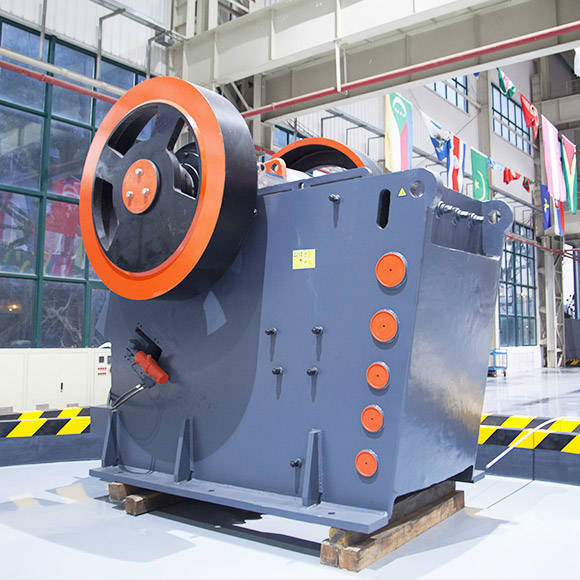Jaw crushers are widely used in the mining, construction, and recycling industries due to their ability to crush large and hard materials into smaller particles. They are designed to efficiently break down rocks, minerals, and other hard substances, making them essential equipment in various applications. In this essay, we will discuss the application and design principles of jaw crushers.

Application of Jaw Crushers:
Mining Industry: Jaw crushers are extensively used in the mining industry to crush and reduce the size of large rocks and ores for further processing. They are commonly used in primary crushing stages to prepare the material for subsequent grinding or beneficiation processes. The ability of jaw crushers to handle high-capacity and abrasive materials makes them suitable for this application.
Construction Industry: In the construction industry, jaw crushers are utilized to crush and process various construction materials such as concrete, asphalt, bricks, and demolition waste. These crushers are efficient in reducing the size of these materials, making them suitable for reuse or disposal. They are commonly used in construction sites, road construction projects, and demolition operations.
Recycling Industry: Jaw crushers play a crucial role in the recycling industry by reducing the size of recyclable materials such as concrete, asphalt, and demolition waste. The crushed materials can be reused as aggregates in new construction projects or as a base for roads and pavements. Jaw crushers are particularly effective in processing reinforced concrete, which often contains steel reinforcements.
Quarrying and Aggregate Production: Jaw crushers are widely used in quarries and aggregate production facilities to crush and process various types of rocks and minerals. They are used to produce different sizes of aggregate for use in concrete, asphalt, and road construction. Jaw crushers are essential in the production of high-quality aggregates that meet the specifications required for various construction projects.
Design Principles of Jaw Crushers:
Crushing Chamber: The design of the crushing chamber plays a crucial role in the performance of a jaw crusher. It determines the size and shape of the crushed material and affects the capacity and efficiency of the crusher. The chamber should be designed to ensure optimal crushing angles and minimize choking and wear.
Jaw Plates: The jaw plates, also known as liners, are the main wearing components of a jaw crusher. They come in different profiles and materials to suit various applications. The design of the jaw plates should ensure proper alignment and distribution of the material for efficient crushing and minimize wear.
Toggle System: The toggle system of a jaw crusher is responsible for the mechanical actuation of the movable jaw against the fixed jaw. It provides the necessary force to crush the material and allows the jaw to move back and forth, enabling the material to be crushed progressively. The toggle system should be designed to withstand high forces and provide smooth and reliable operation.
Drive System: The drive system of a jaw crusher consists of a motor, a pulley, and a belt or chain transmission mechanism. It provides the power to operate the crusher and enables the adjustment of the discharge setting. The drive system should be designed to deliver sufficient power and be easily adjustable to control the size of the crushed material.
In conclusion, jaw crushers are versatile and essential equipment in various industries. Their application in mining, construction, recycling, and aggregate production makes them indispensable for processing hard materials. The design principles of jaw crushers focus on optimizing the crushing chamber, jaw plates, toggle system, and drive system to achieve efficient and reliable operation.
